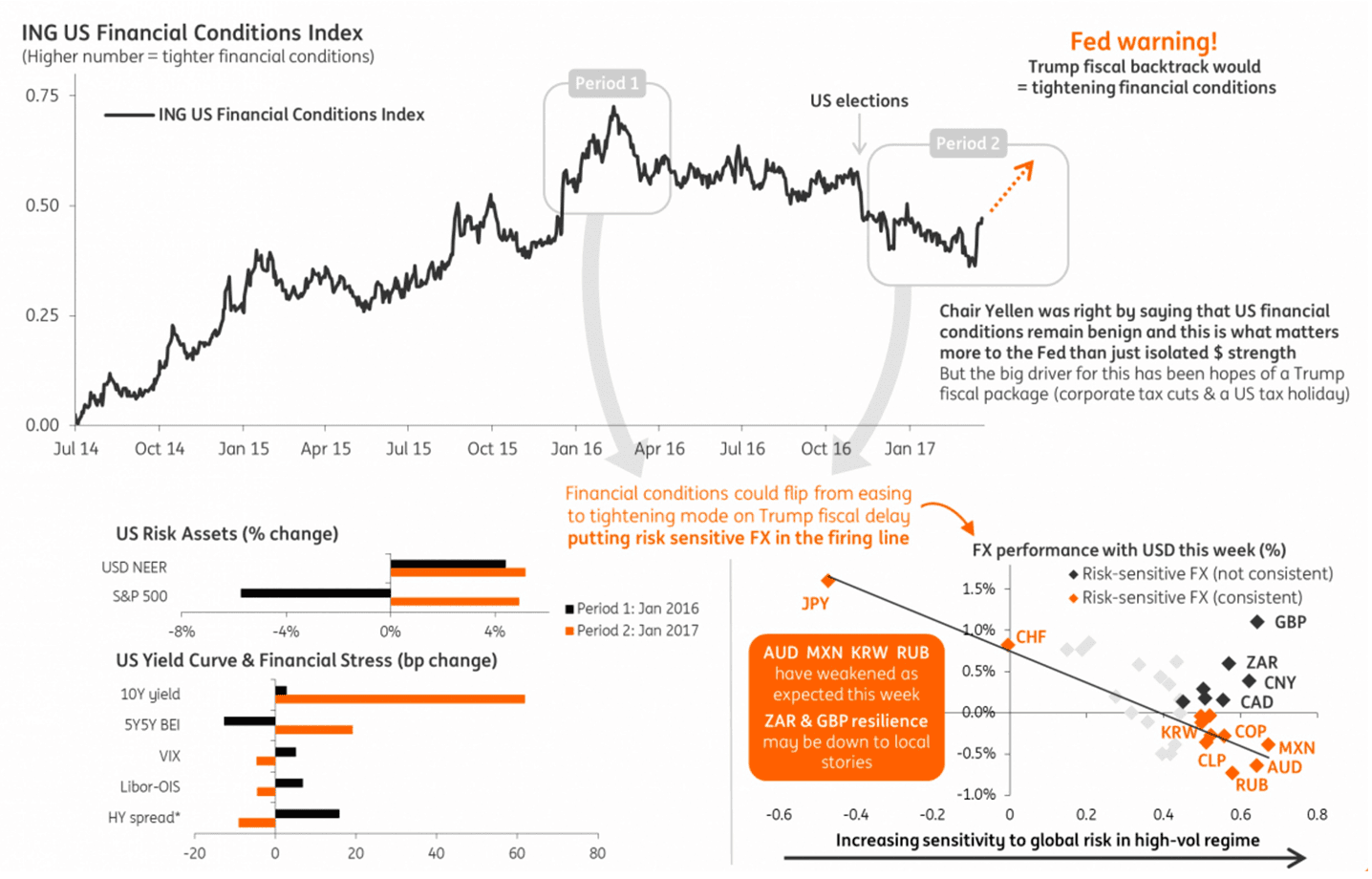Warning Lights Flashing for Financial Conditions: ING
- Written by: Gary Howes
-
Analysts at Dutch lender ING have written to clients telling them that the warning lights are flashing on the global financial marketplace.
In a note to clients dated March 23, ING say the warning signs that markets are losing faith in the great ‘Trumplflation’ trade are evident in their US financial conditions index.
This is the second such warning issued by ING in the space of a week.
Viraj Patel, Foreign Exchange Strategist at ING, reflects that while the latest sharp uptick is consistent with last week’s 25bp Fed funds rate hike, the subsequent market reaction – namely weaker equity markets – has fuelled tightening conditions.
“This draws parallels to when the Fed hiked rates back in Dec 2015 (‘Period 1’ in the graphic below), rather than in Dec 2016 (‘Period 2’) when markets seamlessly absorbed the Fed’s tightening move,” says Patel.
ING tell their clients that the bottom line is therefore that the balance of risks are for tighter – not easier – financial conditions over the coming weeks.
“One obvious difference between now and Jan 2016 (‘Period 1’) is that the fall in risky assets hasn’t occurred in tandem with widening credit spreads. So on the severity scale, current ‘risk-off’ sentiment is slightly more milder than recent historic episodes,” says Patel.
What Does this Mean for Currencies?
From a foreign exchange perspective, recent global reflation talk has been (at least in the first instance) fuelled by more constructive US growth expectations; should such hopes diminish, ING would expect not just US – but also global risk appetite – to deteriorate.
“The rule of thumb would be for high-beta currencies to weaken if global stock markets were to correct further – though typical past relationships are being distorted by local factors,” says Patel.
The graphic (bottom RHS of the chart chart) shows that select currencies (eg, AUD, MXN, RUB & KRW) have responded in a consistent way to higher global risk-aversion this week.
In contrast, the reaction in ZAR & GBP is slightly more anamolous - ING says this is in part due to positive local stories.
“So the amended rule of thumb would be to look for downside in high-beta currencies where there is no obvious positive local story. Within the G10 currencies, AUD and CAD meet this rule - while we would expect GBP to revert back to its risk-sensitive nature once this week's data-driven hawkish BoE noise fades,” says Patel.




